LandScaping 0.3 / Knoten
inhabitants
1. Embodying the material
You can sense the palha de tucumã wrapped around your body. What texture, sound, movement is created from the interaction with the non-human body touching yours? How do the qualities of this material influence your body? Try to locate, translate and adapt your movements to the physical characteristics of the palha, moving out of your body.
What does this material do with us ? What does moving with this material do with us?
2. Figures
With the raphia as costume and extension of our bodies, different figures started living with us in the studio space: primo Itt (“cousin” Itt, inspired from the Adam’s Family), the warrior, the dancing roof, and many more. These figures developed from starting with embodying the organic material raphia and searching for physical relations: when we started to think about raphia as part of our body, it became our hair, arms, torso. This new body configurations gave us a new identity. Or better say, different identities that became alive in this landscape between places.
2. Shakers
Find a connection with the shaker with one body part, your wrist, your foot, your hip. Let the sound of this instrument trigger memories on your skin, let it take you to an almost graspable landscape that you can move in. Start moving while searching for the connection between the sound of the instrument in the space and your own body and movement.
Stay curious and investigative around your connection with the instrument – play with becoming and embodying the sound while you constantly create a sound and movement landscape in the space.
Am I moving the instrument or is the instrument moving me ?
When am I provoking the sound? And when am I developing a relationship with the material in which the source of moving and being moved becomes blurry ?
Foto: Carolina Vieira









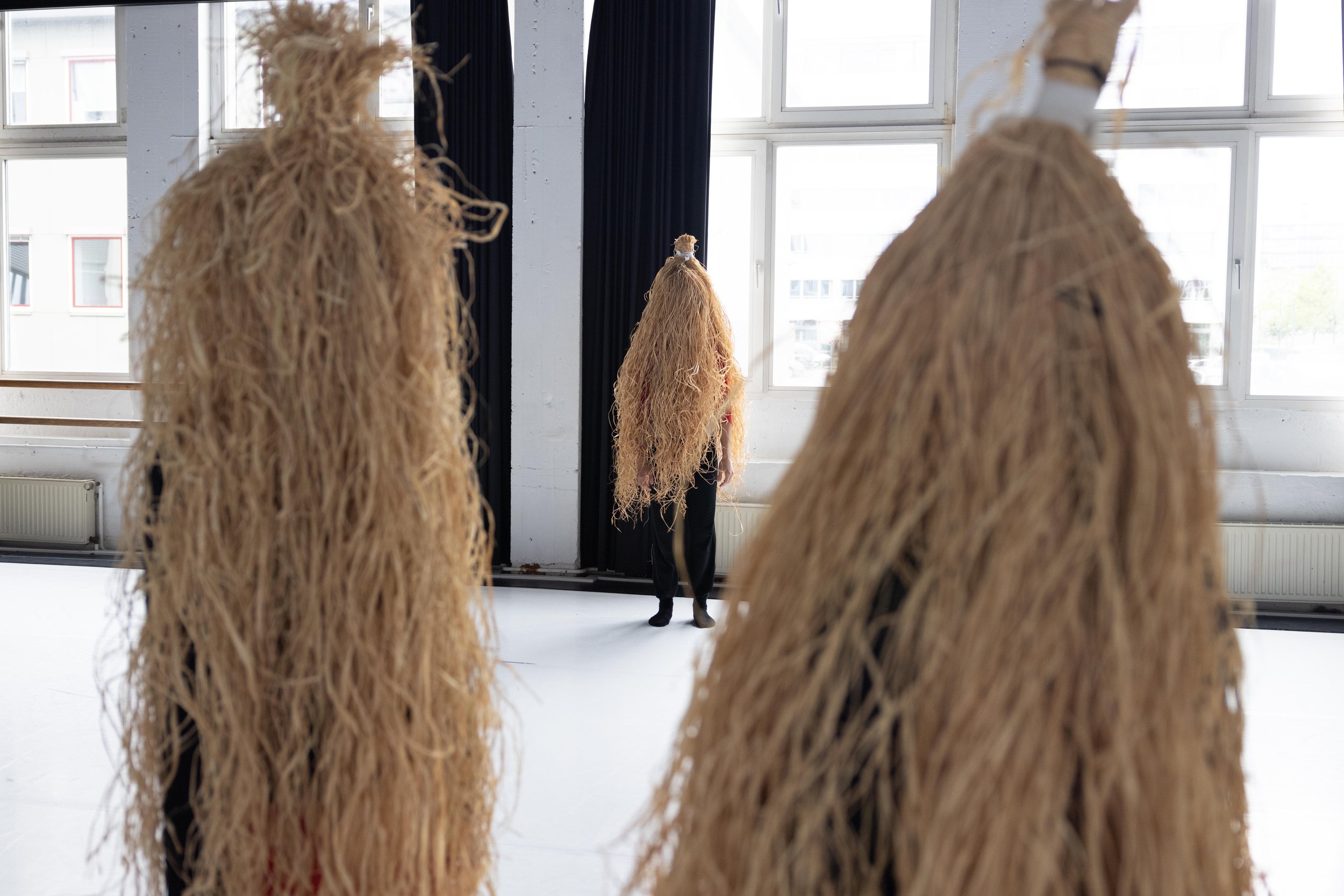












































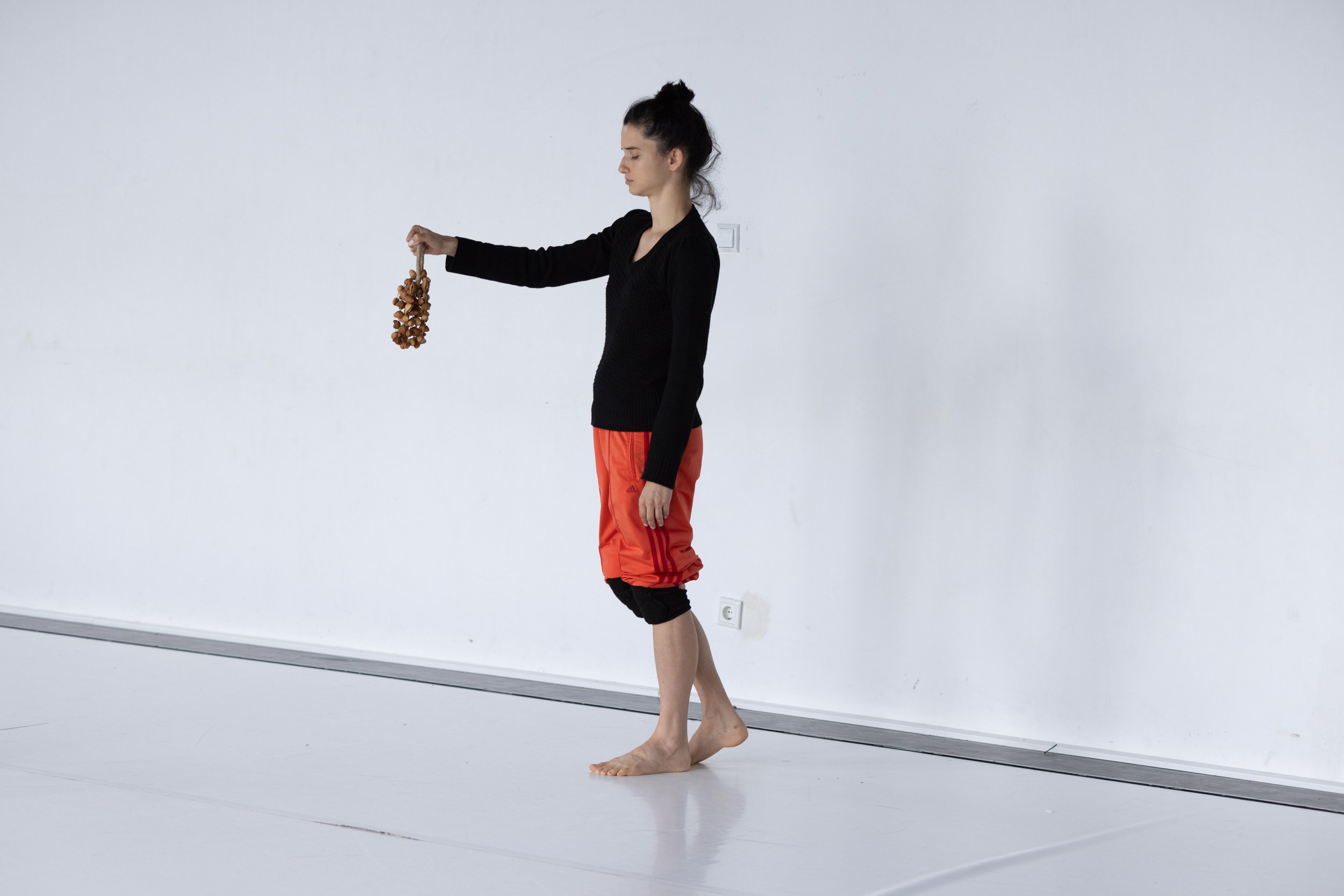



















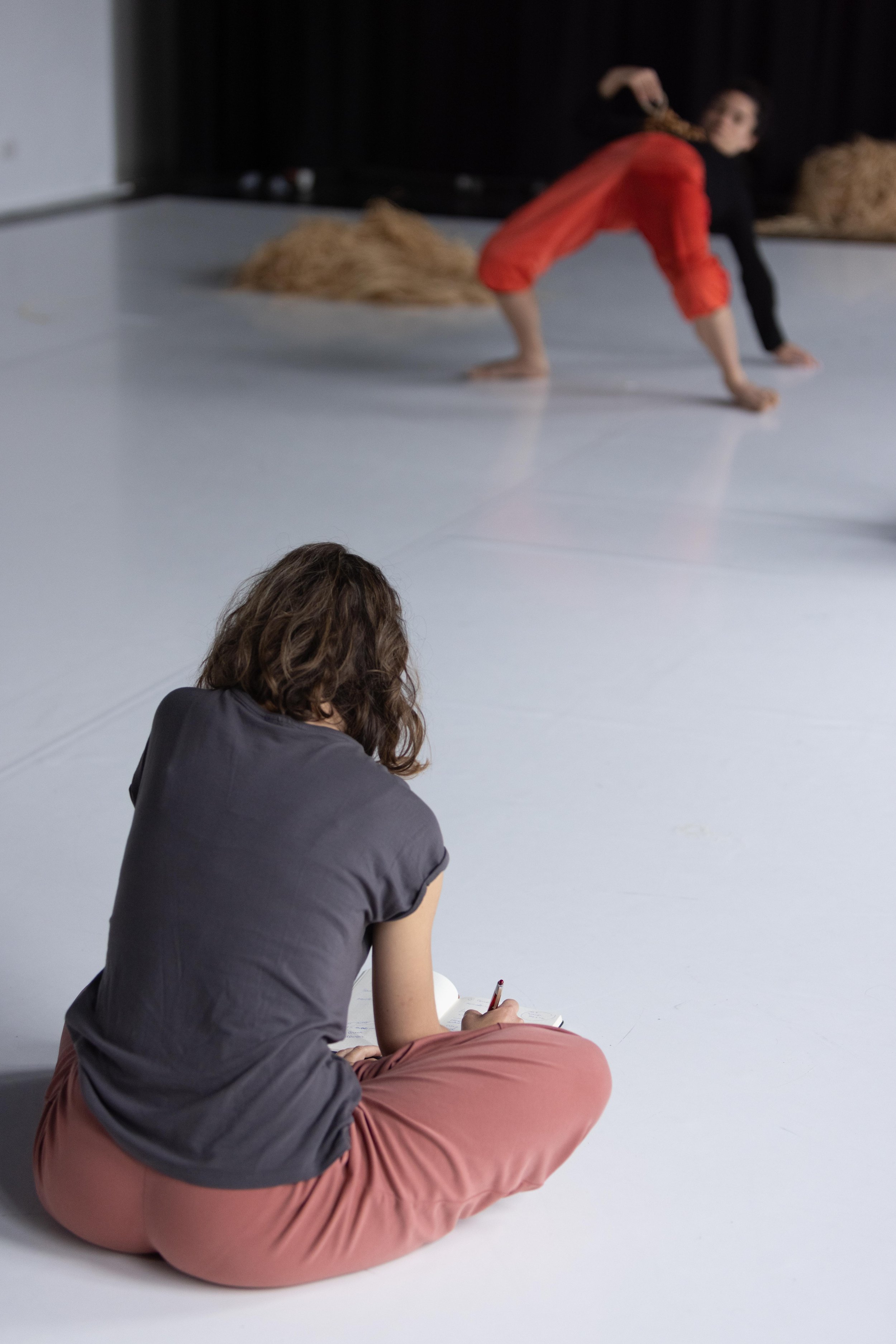


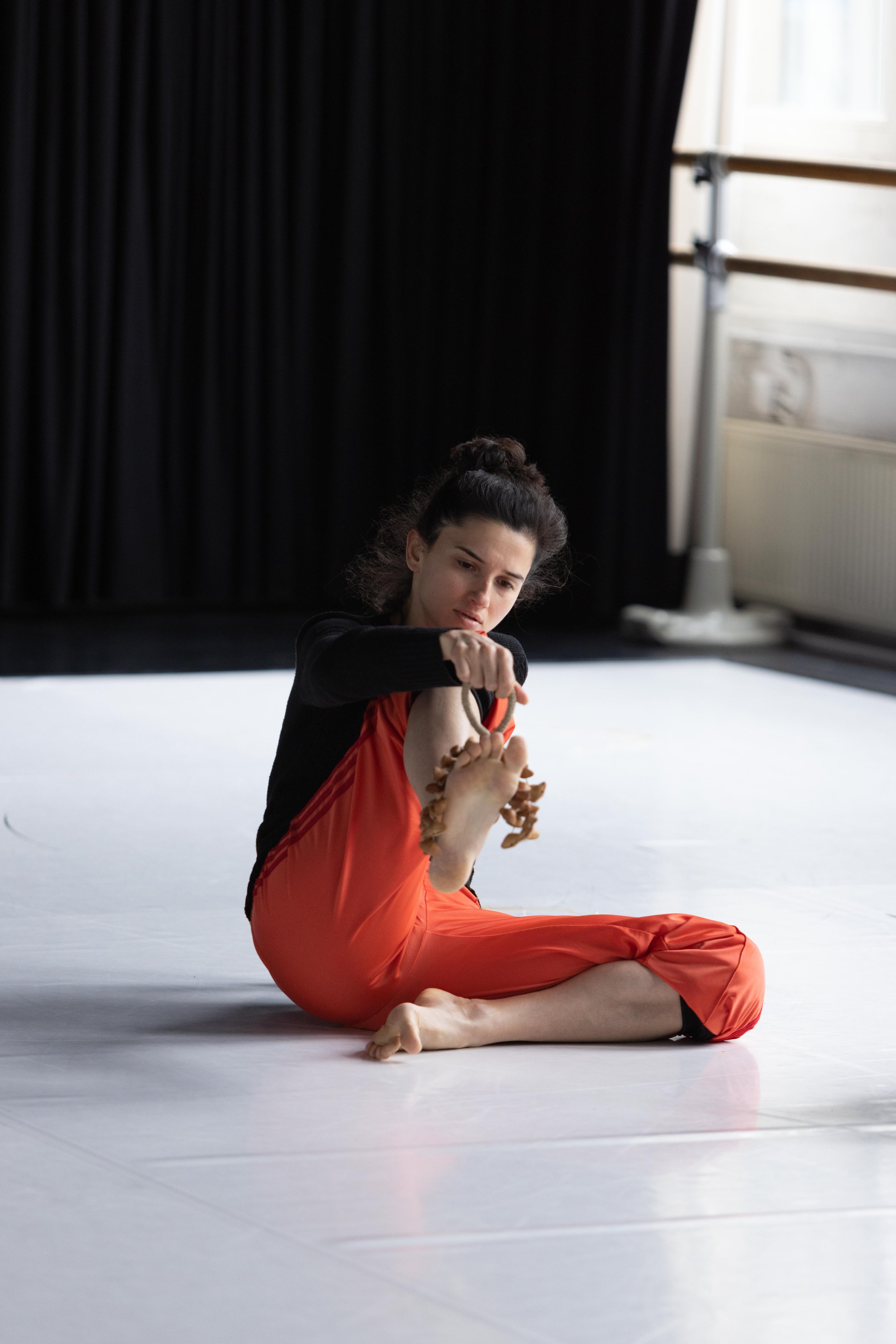


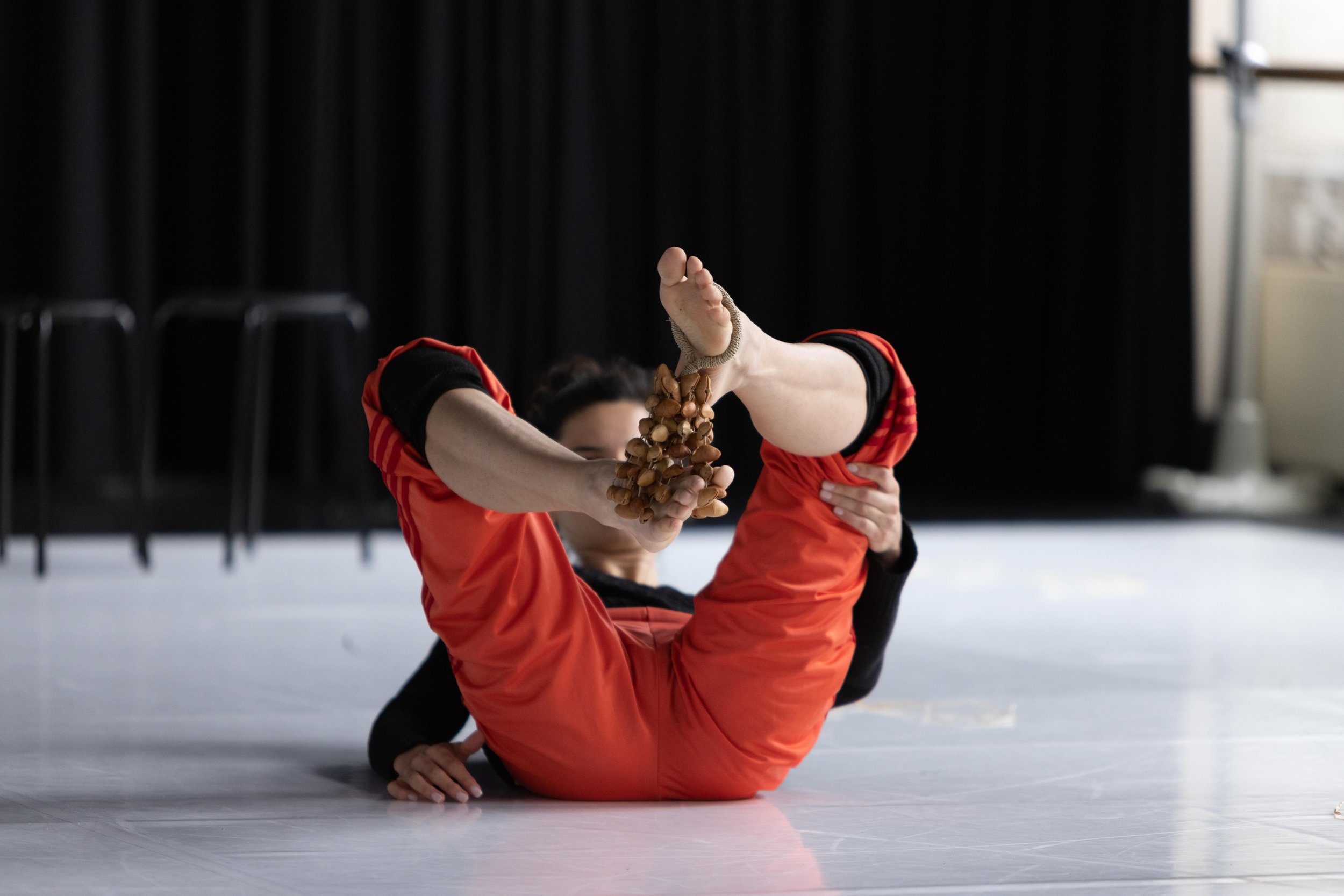











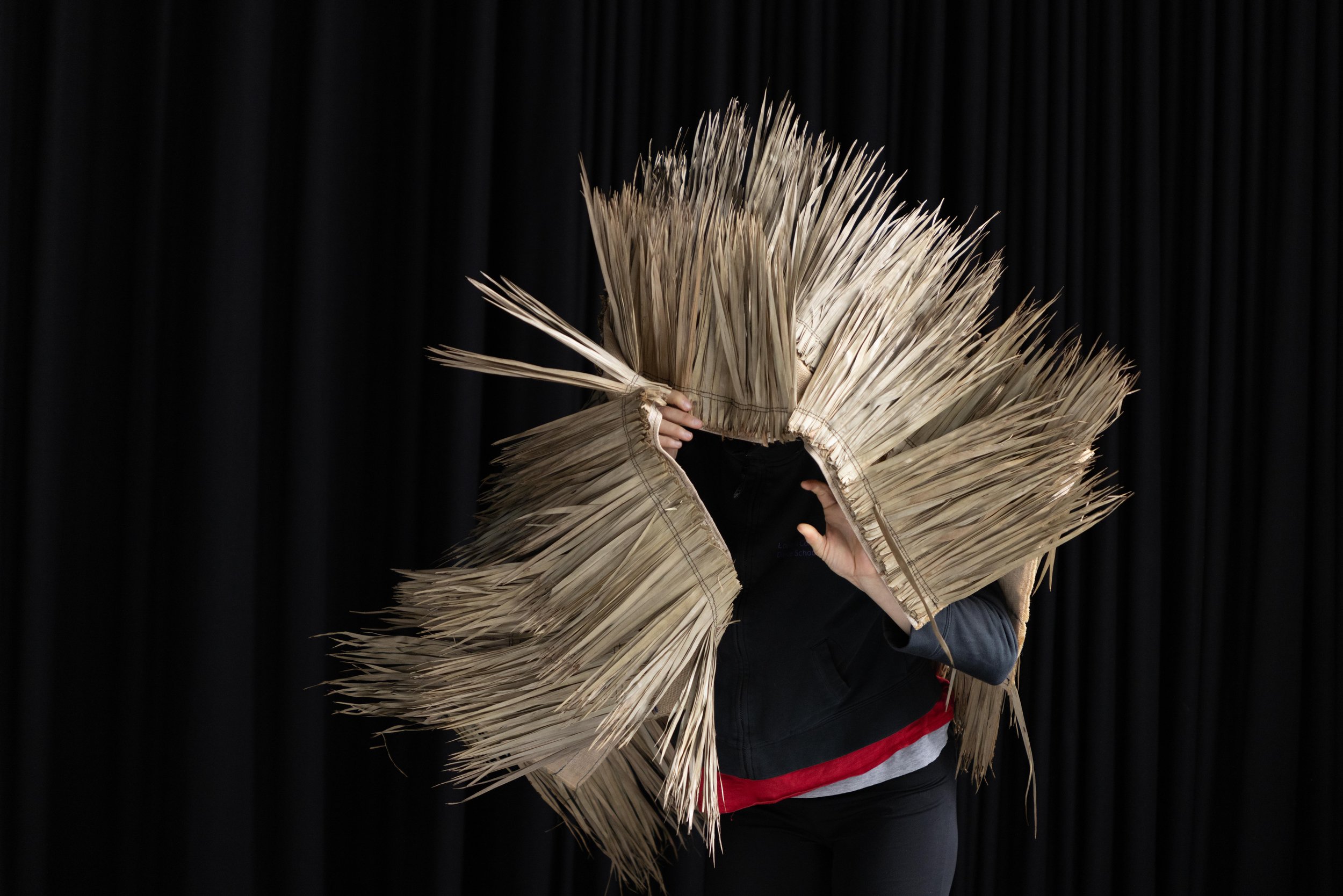




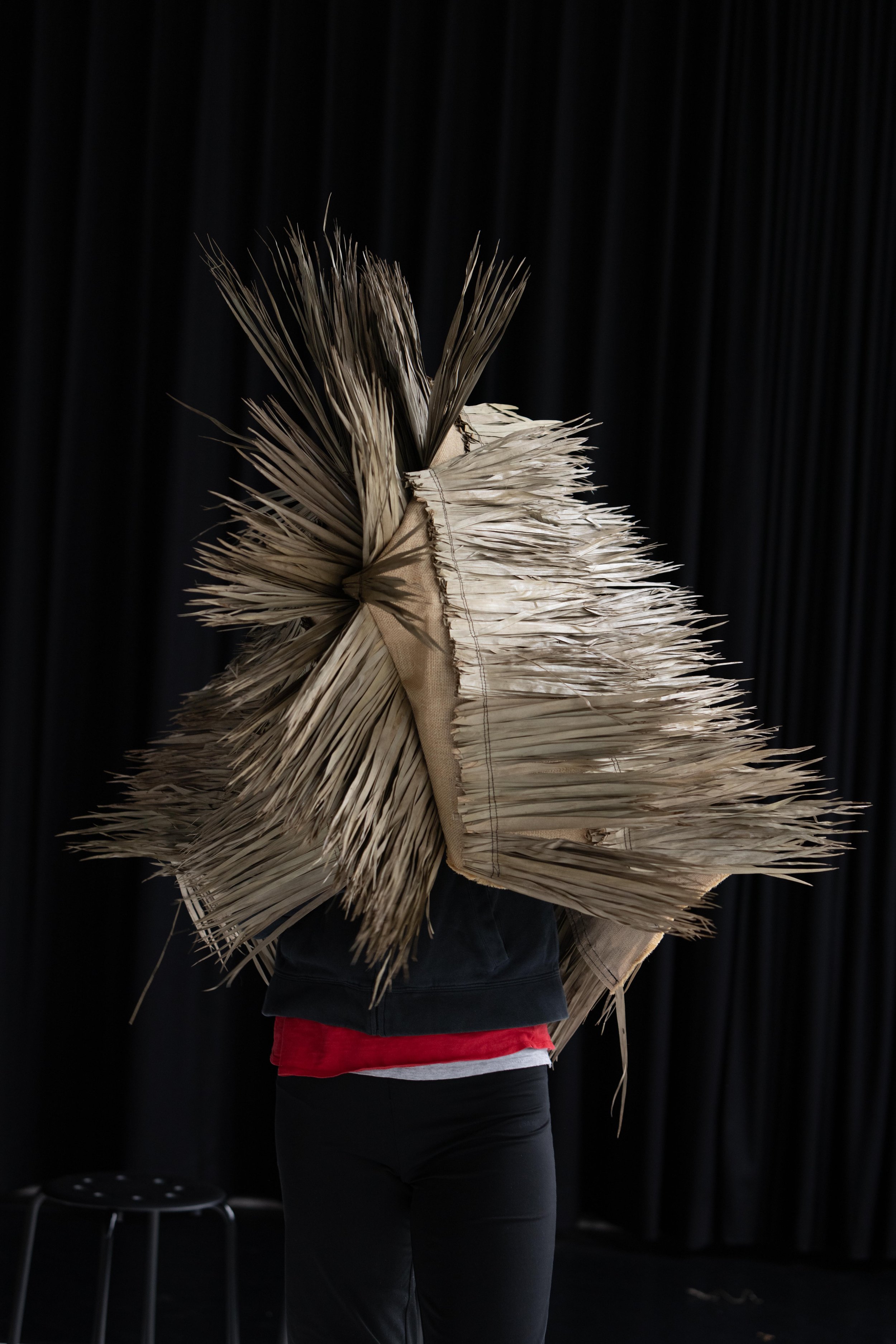





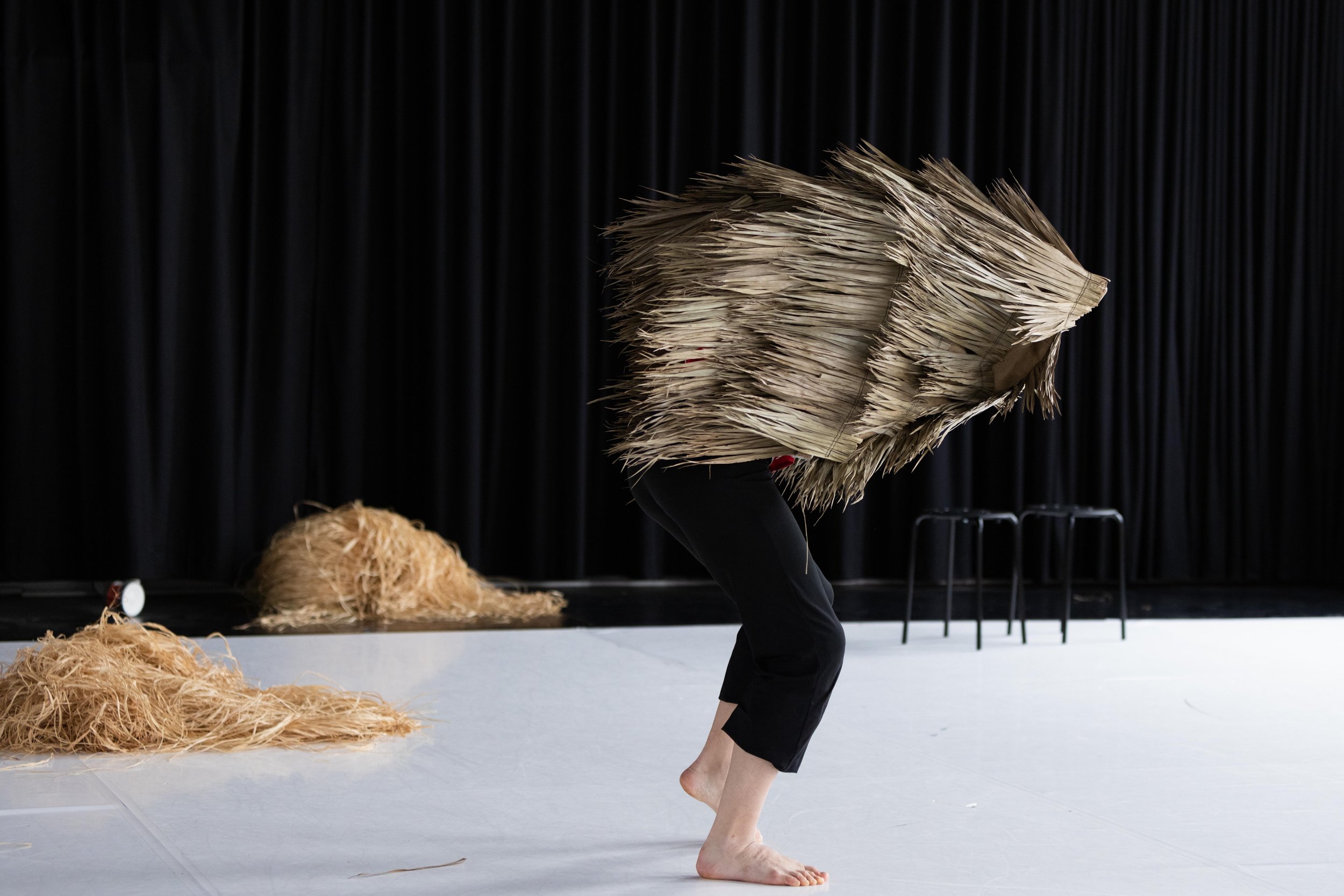





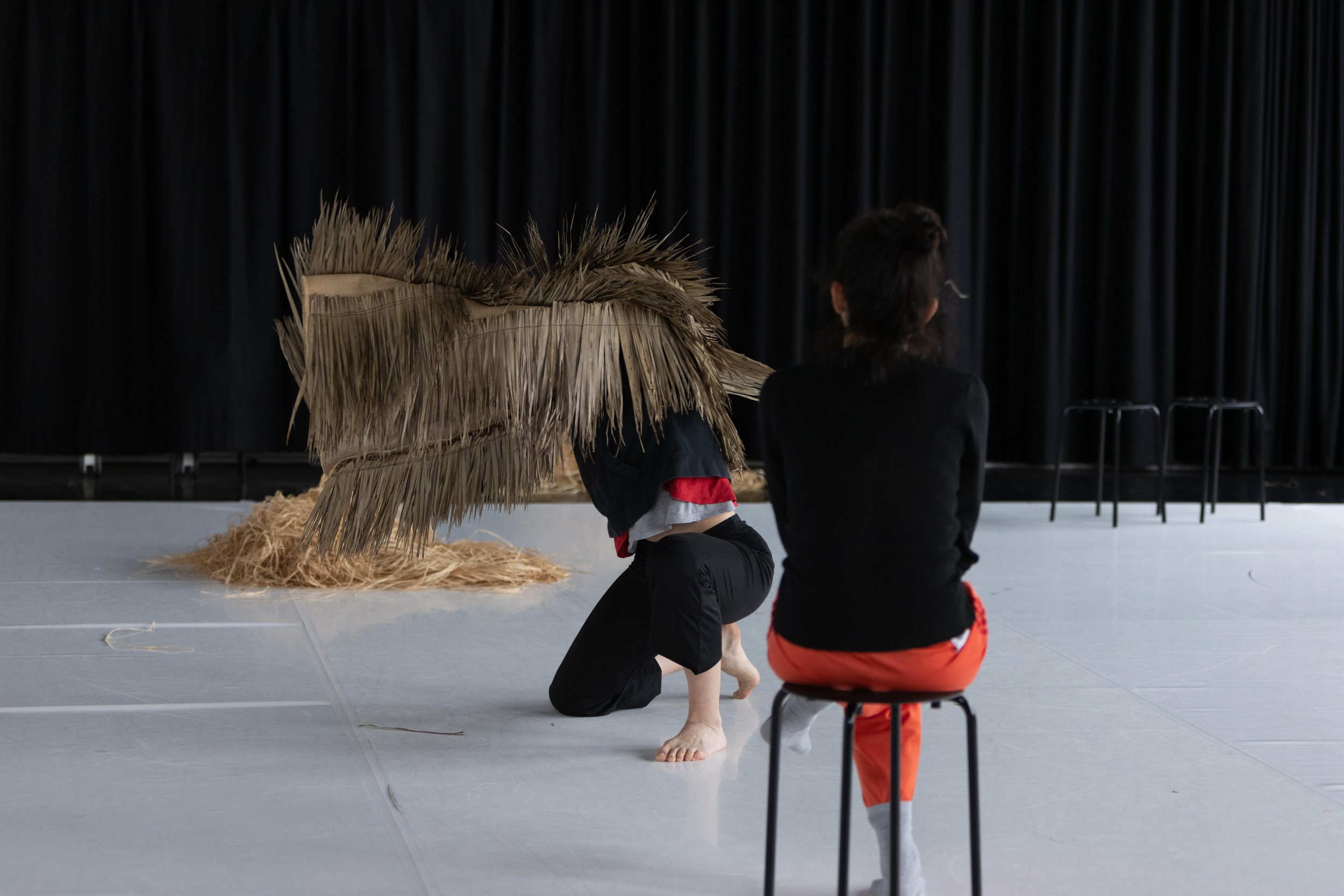








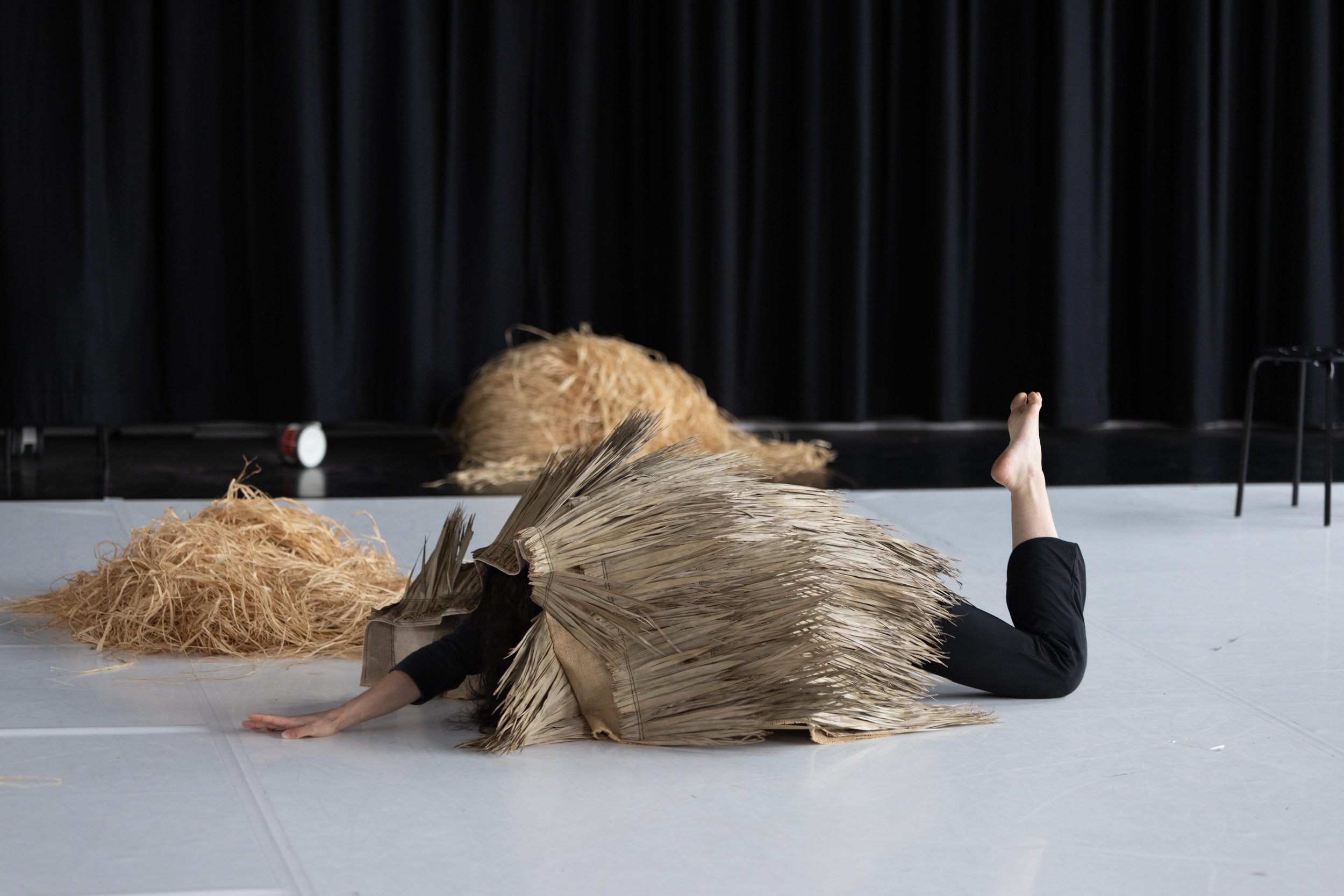












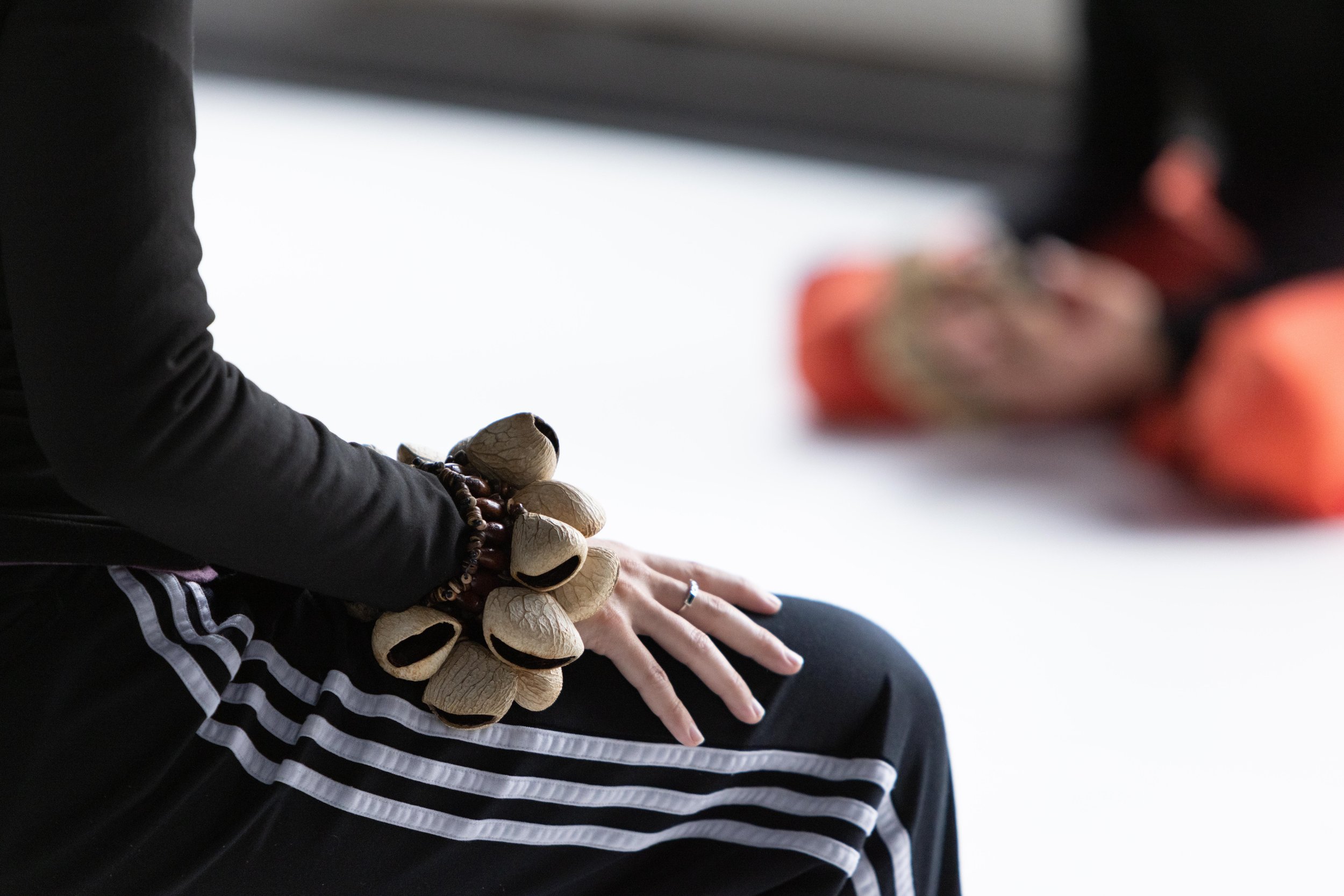
























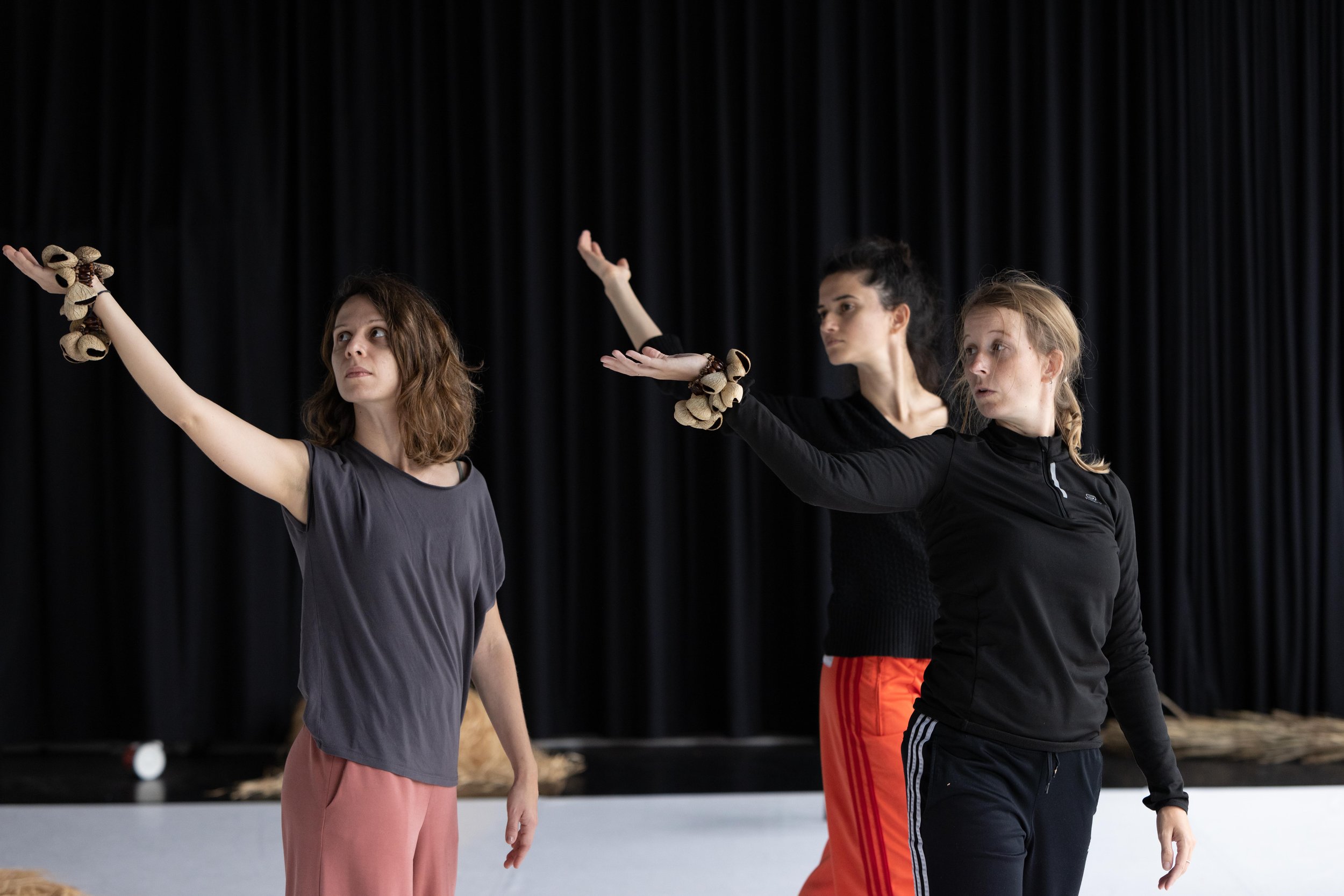











Fotos: Alessandro De Matteis




